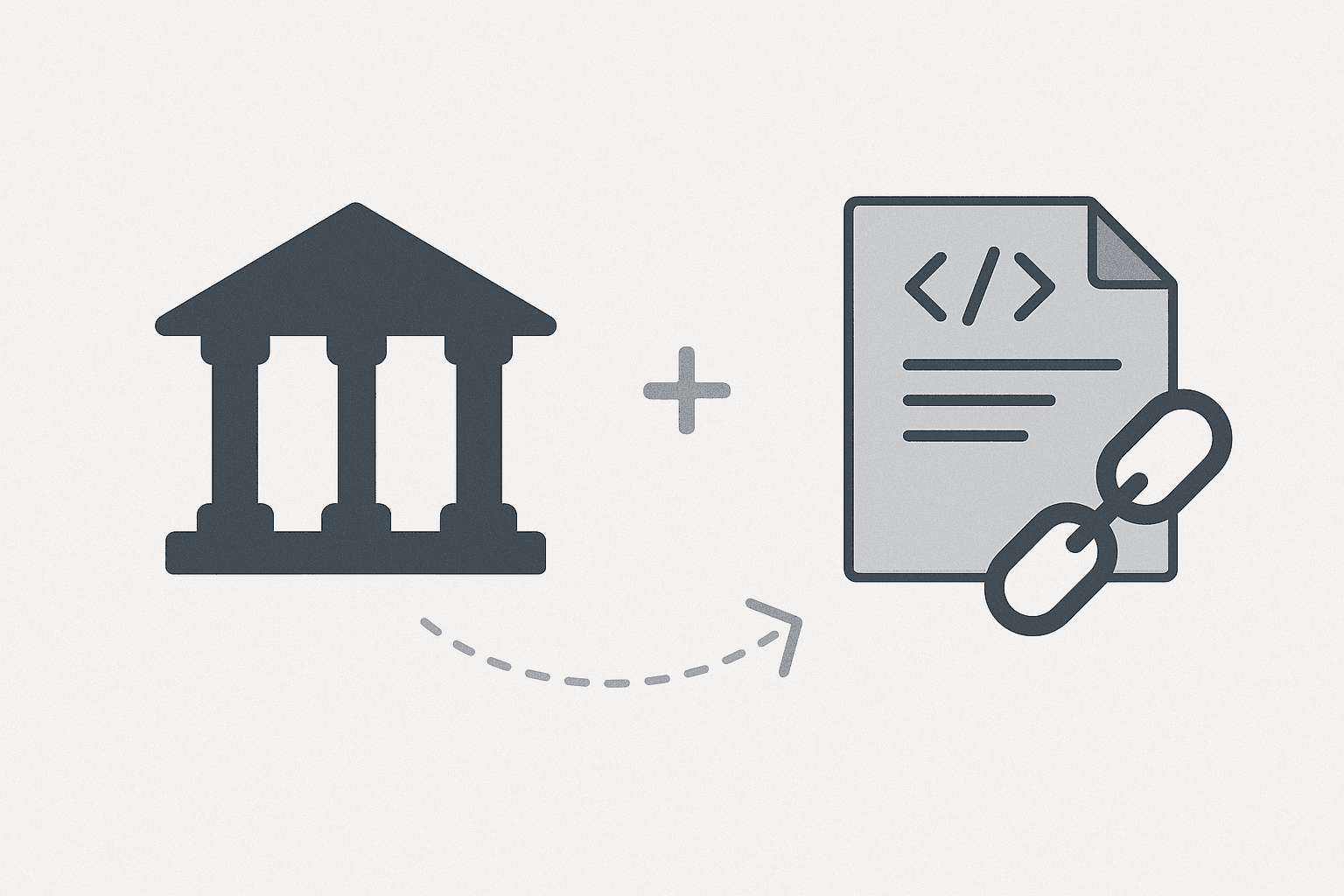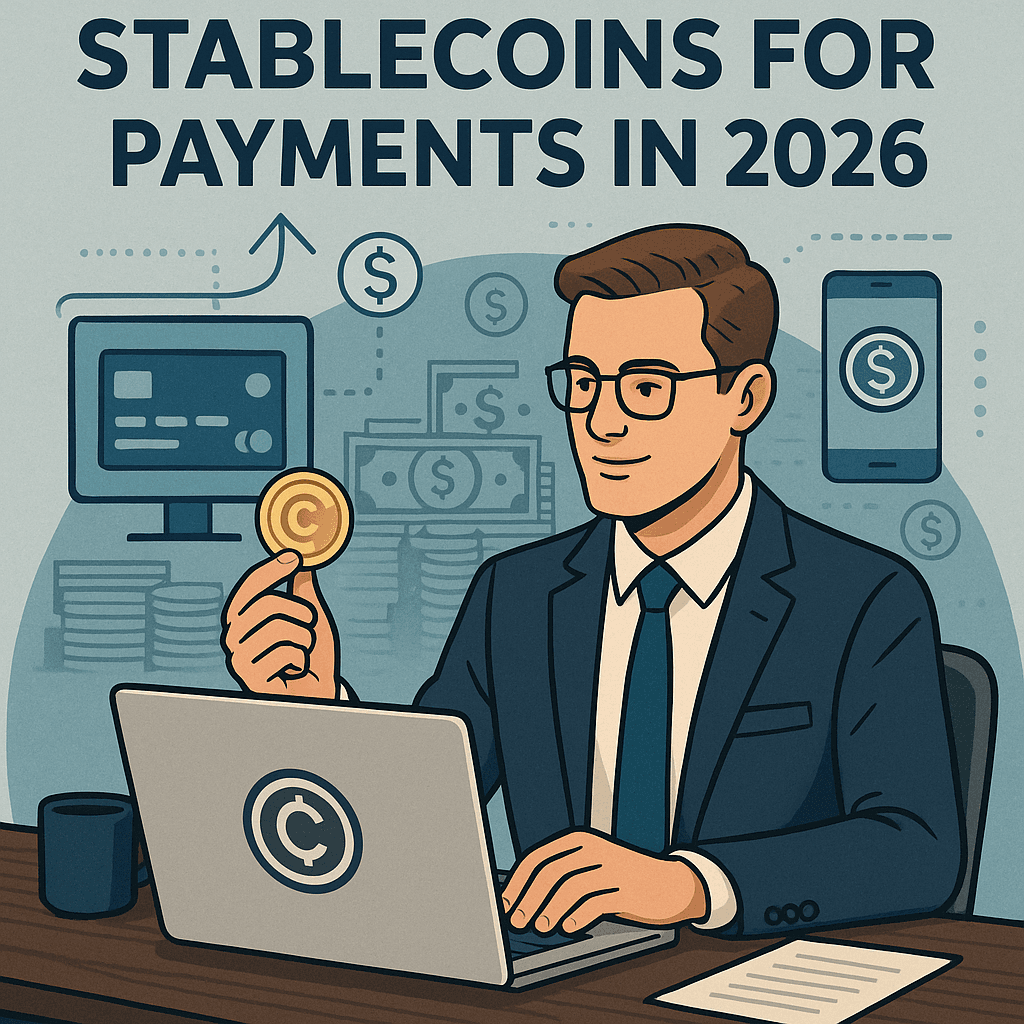The banking industry stands at a crossroads. With programmable money and smart contracts in banking offering instant settlement and lower transaction fees, cutting out the middlemen and directly threatening legacy payment rails, many traditional financial institutions wonder: are smart contracts here to replace banking as we know it?
The answer is more nuanced and more promising than the zero-sum narrative suggests. Rather than viewing DeFi for businesses as a threat, forward-thinking banks are discovering how programmable banking can enhance their existing infrastructure, creating new revenue streams while maintaining their core customer relationships.
What is Programmable Banking? Understanding Smart Money in 2025
Programmable banking represents the evolution of traditional financial services through smart contracts in banking. Unlike conventional banking that relies on manual processes, programmable banking integrates smart contracts with traditional banking infrastructure, enabling automated, rule-based transactions without manual intervention.
Key benefits of programmable banking include:
Enhanced efficiency and transparency in financial operations
Automated escrow management and multi-signature approvals
High yield business bank account crypto capabilities
Stablecoin treasury strategy implementation
Crypto cash management for businesses
This integration isn't theoretical. Major institutions are already exploring DeFi treasury tools:
Citi Treasury and Trade Solutions unveiled a digital asset solution designed to enhance cash management and trade finance capabilities. This solution uses blockchain and smart contracts to provide institutional clients with "always-on" and programmable financial services.
JPMorgan Chase, meanwhile, is taking a different route, launching JPMD, a deposit token designed to function like a stablecoin but tightly integrated with the traditional banking system.
Fnality has introduced a pioneering capability that brings programmability and conditionality to the digital representation of funds at the central bank in the Sterling Fnality Payment System (£FnPS), the world's first regulated DLT-based wholesale payment system.
How Does Programmable Money Work? The Technology Behind Smart Banking
Programmable money refers to digital currency embedded with smart contract functionality that automatically executes predefined conditions. For businesses seeking crypto treasury management, this technology enables:
1. Automated Yield Generation
Smart contracts can automatically rebalance portfolios, execute trades based on predefined conditions, and earn yield on business funds. This creates USDC yield account for companies that continuously optimize returns without manual intervention.
2. Conditional Payments and Smart Escrows
Unlike traditional payments that are immediate and irreversible, programmable yield allows for conditional releases. Pull-based crypto payments enable funds to be held in smart escrows that only release when specific conditions are met such as delivery confirmation, regulatory approval, or multi-party authorization.
3. Dynamic Risk Management for Business Banking
DeFi business banking solutions can monitor real-time market conditions and automatically adjust lending rates, collateral requirements, or investment allocations based on predefined risk parameters.
4. Programmable Compliance and Treasury Management
Rather than manual compliance checks, stablecoin business account systems can embed regulatory requirements directly into the payment flow, ensuring automatic adherence to anti-money laundering (AML) and Know Your Customer (KYC) requirements.
The GENIUS Act: Regulatory Framework for Smart Banking
The recent passage of the GENIUS Act marks a watershed moment for programmable banking and DeFi for businesses. The legislation establishes for the first time a comprehensive regulatory framework for the issuance and regulation of payment stablecoins in the United States.
Critically, Nothing in this Act may be construed to limit the authority of a depository institution, Federal credit union, State credit union, or trust company to engage in activities permissible pursuant to applicable State and Federal law, including (1) accepting or receiving deposits and issuing digital assets that represent deposits; (2) utilizing a distributed ledger for the books and records of the entity and to affect intrabank transfers; and (3) providing custodial services for payment stablecoins.
This regulatory framework doesn't force banks to choose between traditional operations and blockchain innovation, it explicitly enables crypto treasury management and stablecoin business account services within existing banking infrastructure.
Real-World Applications: Beyond the Hype
The practical applications of smart banking are already emerging across multiple use cases:
Trade Finance Revolution
Smart contracts were used to encode the underlying fund distribution rules and embed them in the token transferred to hypothetical WisdomTree clients. This same principle applies to letters of credit, where smart contracts can automatically release payments upon delivery confirmation, reducing settlement times from days to minutes.
Supply Chain Financing
Smart contracts enable banks to offer dynamic financing based on real-time supply chain data. Payments can be automatically triggered when IoT sensors confirm delivery, or when specific milestones are reached in a project timeline.
Corporate Treasury Services
Banks can offer programmable treasury accounts that automatically optimize yield, rebalance portfolios, and execute complex financial strategies based on market conditions—all while maintaining custody and regulatory oversight.
The Partnership Model: Banks as Smart Infrastructure Providers
Rather than competing with DeFi protocols, banks have a unique opportunity to become the regulated infrastructure layer for programmable finance. This partnership model offers several advantages:
For Banks:
New revenue streams from programmable financial services
Enhanced operational efficiency through automation
Deeper customer relationships through embedded finance
Competitive differentiation in an increasingly commoditized industry
For Customers:
Access to innovative financial products within a trusted, regulated environment
Seamless integration between traditional and programmable banking services
Enhanced security and compliance protections
24/7 programmable functionality without sacrificing relationship banking
For the Financial System:
Gradual, controlled adoption of blockchain technology
Maintained regulatory oversight and consumer protections
Increased efficiency and reduced settlement risk
Bridge between traditional finance and emerging digital economies
Addressing the Concerns: Risk Management in Smart Banking
The integration of smart contracts into traditional banking isn't without challenges. Banks rightfully have concerns about:
Technical Risk
Infrastructure risk. Implementing stablecoin products introduces new infrastructure dependencies: digital wallets, token issuance platforms, smart contracts, and blockchain ledgers. Most banks are not equipped to maintain or monitor these systems at scale.
Solution: Banks can partner with specialized infrastructure providers rather than building everything in-house. This allows them to focus on their core competencies—customer relationships and risk management—while leveraging proven blockchain technology.
Cybersecurity Concerns
Cybersecurity risk. Despite the popular sentiment, the blockchain doesn't eliminate cybersecurity concerns — it amplifies them. Banks issuing or supporting stablecoins must be concerned about smart contract vulnerabilities, wallet breaches, and fraudulent transfers.
Solution: To address these security concerns, it is crucial to implement robust security protocols, including comprehensive code audits and testing by independent security experts. Enhancing the encryption methods and ensuring that security measures evolve with technological advancements can also mitigate risks.
Regulatory Uncertainty
The legal status of smart contracts is still evolving, leading to potential disputes and enforcement issues.
Solution: The GENIUS Act provides the regulatory clarity banks need to move forward confidently. Senator Tim Scott emphasized that the bill "creates clarity without killing innovation," highlighting its industry-informed development process.
The Yield Revolution: Making Every Dollar Work Harder
One of the most compelling aspects of programmable banking is the ability to make idle capital productive instantly. Traditional banking often leaves funds sitting in low-yield accounts during settlement periods or while waiting for conditions to be met.
Smart banking changes this equation fundamentally. Consider a business payment system where:
Payments earn yield from the moment they're received
Escrow funds continue generating returns until conditions are met
Failed transactions automatically return principal plus accrued interest
Treasury funds are continuously optimized across multiple yield sources
This isn't just about marginally better returns, it's about transforming payments from a cost center into a revenue generator. Banks that can offer these capabilities will have a significant competitive advantage over those stuck in the traditional payment paradigm.
Implementation Strategy: A Phased Approach
Smart banks are taking a measured approach to programmable banking implementation:
Phase 1: Pilot Programs
Launching pilot programs can help institutions test smart contract applications in a controlled environment. Feedback from these programs can guide further development and implementation.
Phase 2: Strategic Partnerships
Collaborating with fintech companies can provide access to innovative technologies and expertise. Partnerships can also facilitate the integration of smart contracts into existing systems.
Phase 3: Infrastructure Investment
Invest in infrastructure. Evaluate what infrastructure is needed to participate, whether directly or via partnerships. This includes wallet integrations, digital identity, tokenization platforms, and smart contract capabilities.
Phase 4: Full Integration
Gradually expand programmable features across all banking products, from personal accounts to corporate treasury services.
The Future of Money is Programmable - And Banked
The question isn't whether programmable money will transform finance—it's whether traditional banks will be part of that transformation or left behind by it.
Verdian predicted that the retail rollout of programmability won't happen through central banks, but through commercial ones. "What you'll have is your current relationship with your bank, just with smarter money running it. That's why the banking system exists, to deal with that front-facing relationship for business and consumers," he emphasized.
The banks that thrive in this new paradigm will be those that view smart contracts not as a threat to their business model, but as an enhancement to it. They'll offer programmable banking services that combine the innovation of DeFi with the trust and regulatory compliance that only traditional financial institutions can provide.
This hybrid model—smart contracts running on bank rails—represents the best of both worlds: financial innovation without financial disruption, programmable efficiency without regulatory uncertainty, and yield-generating capabilities without sacrificing safety and trust.
The future of banking isn't about choosing between smart contracts and traditional banking, it's about making traditional banking smarter through programmable money. The institutions that recognize this opportunity first will be the ones that define the next generation of financial services.
Ready to explore how programmable money can enhance your business banking? The tools exist today to make every payment more productive, every escrow more efficient, and every treasury operation more intelligent.
The question is: will you be part of the programmable banking revolution, or will you watch it happen from the sidelines?
Frequently Asked Questions About Smart Banking and Programmable Money
What is the difference between smart contracts and traditional banking?
Smart contracts in banking automate financial processes through code, while traditional banking relies on manual verification and third-party intermediaries. Programmable banking combines both approaches for enhanced efficiency and earn yield on idle capital.
How can businesses earn yield on idle capital?
DeFi treasury tools enable businesses to automatically deploy idle funds into yield-generating protocols. This crypto treasury management approach can generate 6-8% APY compared to near-zero traditional banking rates through USDC yield account for companies.
Is programmable banking safe for businesses?
Stablecoin business account systems operate under the same regulatory frameworks as traditional banking, with additional security benefits from blockchain transparency and programmable compliance features.
What are the benefits of programmable payments for businesses?
Programmable yield systems enable businesses to earn returns on payments until they're needed, while pull-based crypto payments provide reversibility and enhanced security compared to traditional payment rails.
How does the GENIUS Act affect smart banking?
The GENIUS Act provides regulatory clarity for DeFi business banking, explicitly allowing banks to issue digital assets representing deposits and utilize distributed ledgers for internal operations.
Looking to implement programmable banking solutions for your business? Modern platforms are making it easier than ever to combine traditional banking reliability with DeFi yield generation. Explore how your business can benefit from programmable money today.



